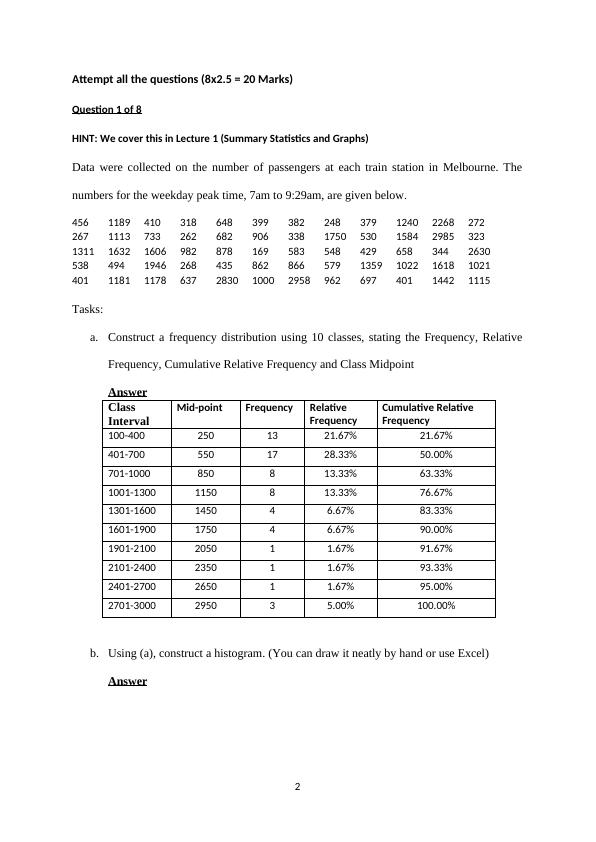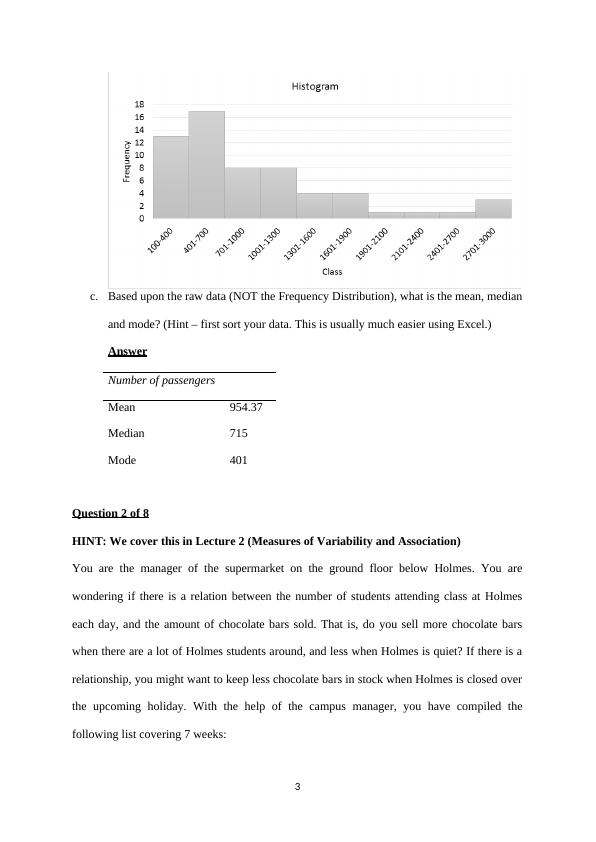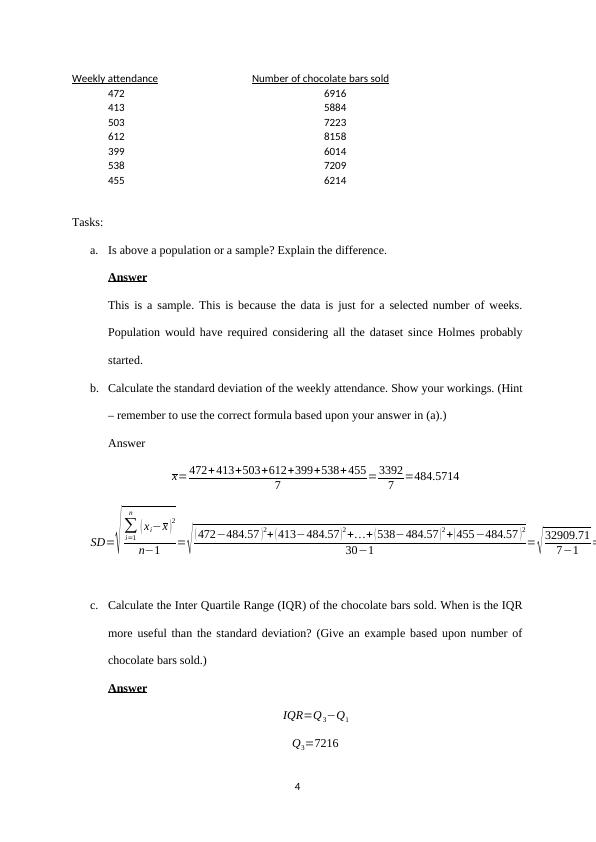HA1011 Group Assignment - Summary Statistics, Measures of Variability and Association, Linear Regression, Probability
This is a group assignment worth 20% of the final grade. It is an applied assignment that requires students to demonstrate their understanding of the principles and techniques taught in the course. All problems must be completed in the prescribed format and submitted in WORD format through Safe-Assign on the course website.
Added on 2023-04-23
About This Document
HA1011 Group Assignment - Summary Statistics, Measures of Variability and Association, Linear Regression, Probability
This is a group assignment worth 20% of the final grade. It is an applied assignment that requires students to demonstrate their understanding of the principles and techniques taught in the course. All problems must be completed in the prescribed format and submitted in WORD format through Safe-Assign on the course website.
Added on 2023-04-23
End of preview
Want to access all the pages? Upload your documents or become a member.




